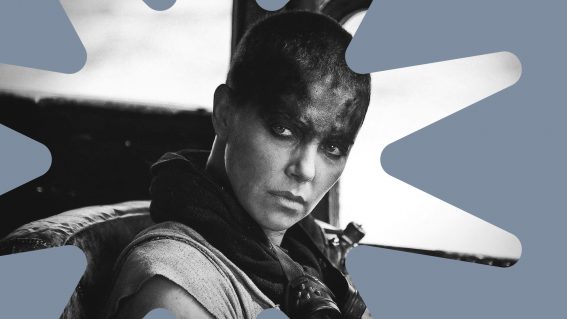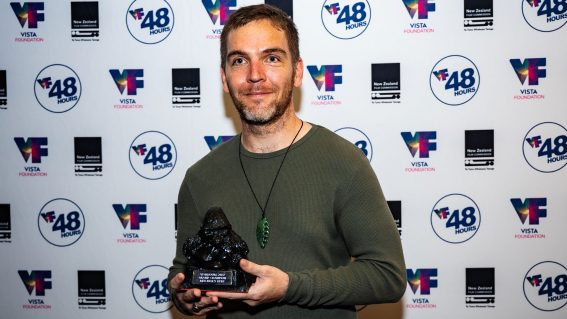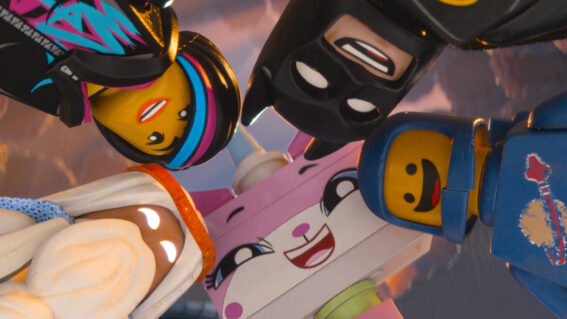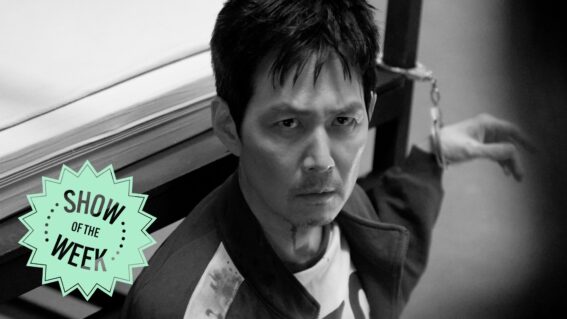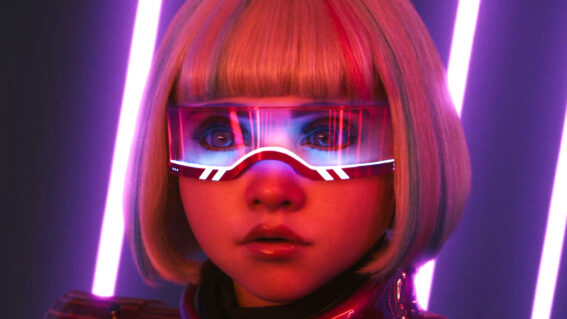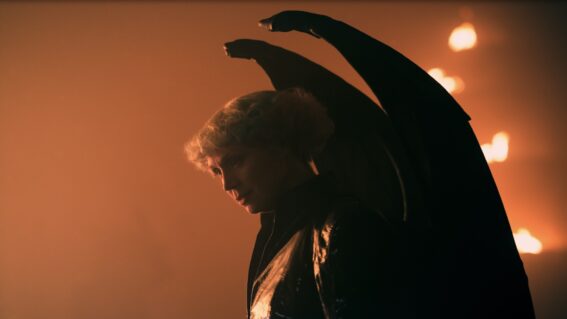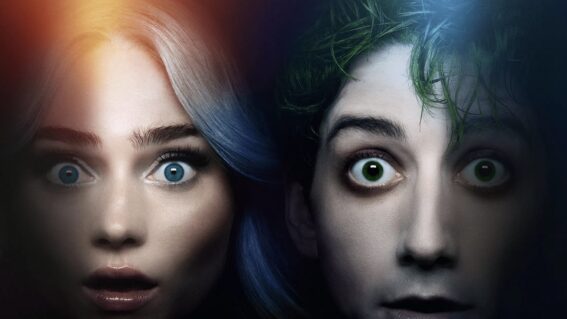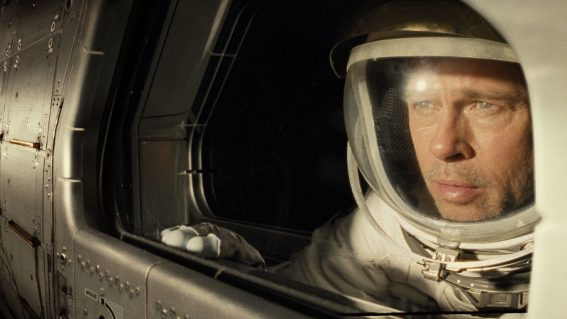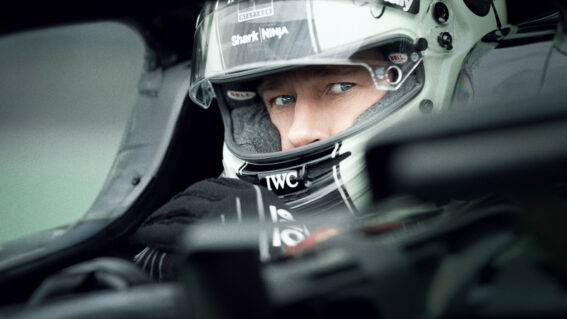Talk To Me directors join us to chat horror, nangs, SWIDT and Street Fighter
“All those backyard drug trips are inspirations,” we hear about the séance scenes in hot new horror.

Danny and Michael Philippou (aka RackaRacka) joined Steve Newall for a chat about their feature debut, hotly tipped horror Talk to Me.
Picked up for distribution by A24, Aussie horror Talk to Me is one of the hot tickets of 2023. The film sees teenagers taking turns to grasp an embalmed, inscribed hand at séances, holding it and saying “talk to me”—whereupon they’re possessed by a random spirit. Of course, that’s just the beginning…
Via Zoom, filmmaking twins Danny and Michael Philippou delve into some of the film’s inspirations—including backyard drug trips, The Exorcist, and even Taika Waititi—as well as sharing a little on the possibility of doing a new Street Fighter movie, and humouring Steve Newall’s question “How fucked up can you make a young kid’s face?”
This conversation has been edited for length and clarity.
FLICKS: Talk to Me really taps into some of the great teen horrors of yesteryear, where kids exist in a slightly different world. It’s not a total latchkey kids situation – they’re not completely abandoned to their own devices – but they encounter this occult power and are kind of figuring things out for themselves.
DANNY PHILIPPOU: Yeah, that was a big thing. When we were gonna make it with a studio in Hollywood, they were trying to sort of cut that out or let the kids know what was happening. Like, really investigate the hand and understand it and know how to beat it. Whereas we really wanted the kids to be out of their depth and they have this drug, or this thing where they don’t really understand what they’re playing with, and what the side effects are, or really how to use it. And we like that they are just figuring it out, and just going with it.
MICHAEL PHILIPPOU: Yeah, they’ve got their rules of how they think it works and what they think it is, but that’s not necessarily the truth of it, you know. They’re using it in their own way, with their own rules set around it.
If you look at something like A Nightmare on Elm Street, it’s not set up as such a fun premise, but it feels like there are some similarities there. The kids inhabit their own world, and they’ve got some kind of life or death stakes that they’re unwilling or unable to talk to, you know, the powers that be or the older generation about.
DANNY: Oh man, that’s such a cool movie, that first Nightmare on Elm Street is so good. I love that movie.
I wanted to ask about nangs. I’m not saying I’ve ever been in this environment, of course, but I feel like a bunch of kids sitting around in a basement disappearing for 90 seconds and then coming back while everyone watches and laughs at them may be nang-related?
MICHAEL: All those backyard drug trips are inspirations. A big kick-off point for me was seeing footage of my neighbour doing a drug and being on the floor convulsing and everyone was just filming him and laughing at him. And he was having a negative reaction, but no one was taking him seriously. Like, that was a big inspiration for me as well. So yeah, nangs or any of those backyard drug trips.
DANNY: When you’re a kid and you see it for the first time—someone you know, on drugs or drunk or whatever—it’s like that’s a completely different person, it doesn’t feel like the same person, you know? They’re like a different character…
MICHAEL: …almost possessed?!
I thank God that when I was younger, we weren’t all documenting our lives on our phones…
MICHAEL: Well, that’s the thing now with this generation, because phones are so readily available and so’s video. You can’t really do things or make mistakes and let it be talked about and then forgotten. It’s kind of immortalised on the internet and can follow you. There’s positives and negatives to how it is in this current generation, but that kind of stuff is scary—like you can never kind of completely make something go away, you know?
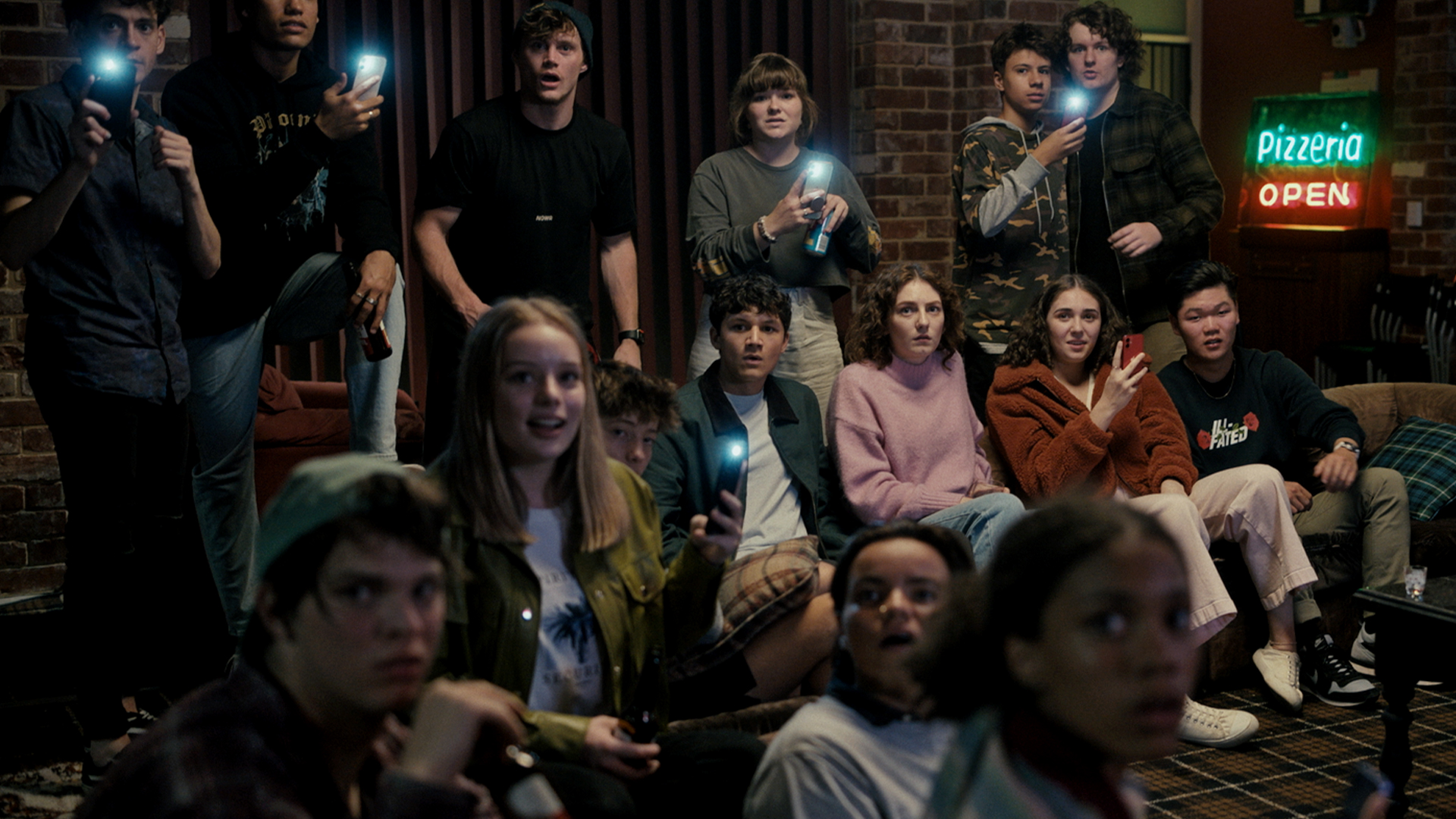
I think that you’re attuned to that element of our culture in a way that isn’t really heavy-handed. There’s a scene where someone is caught on camera in a really compromising position – like, a life-ruining position, really, the stakes are extremely high for that person. I think you have a very matter-of-fact approach to that.
DANNY: Yeah, basing it in a reality that feels real to us in those situations and the way that people are interacting. We didn’t want to do a PSA film, or have anything be hitting you over the head. It was just expressing so many different things at the same time.
MICHAEL: And our experience of what it would be like in that environment and how people would react, you know? There’s always two levels going on—there’s what the kids are doing, and then the kind of dark undertones underneath. They’re not fully grasping what it is that dealing with.
Do you have a really strong sense of the lore and the background? Of all the rules of what’s going on?
DANNY: Yeah, we’ve got a really thick mythology bible that has everything—even down to how the spirits that are connecting with the kids are drawn to certain emotions that they’re having. And how the phrases that are written on the hand ties into some of the backstory and stuff.
MICHAEL: There’s little hints on the hand and and we have a massive bible. What the kids know or don’t know, that was on purpose. We allude to some things but mostly it’s a mystery. So the idea of a sequel or something like that is exciting to us, because there are so many stories that can be told.

What we get as an audience is a very coherent horror film. What we see on the screen isn’t just setting up for another film to be made. It’s a really concise movie, and those are the best movies, so thank you for taking that approach.
MICHAEL: Yeah, definitely. We wanted it to work as a standalone thing, but then also as a horror film and a drama film. That was important to us, to work on both planes, not just jumpscares and shock horror, but also what’s happening underneath—because the films we like watching are those really well-written, well-rounded films, you know, with great characters, and just an awesome story. So that was important to us to kind of try and hit it on those levels.
DANNY: To toot your own horn a little bit?
MICHAEL: Yeah, well, that was what we were trying to do. Toot toot.
Let’s talk a little bit about the cast. How did you bring together that great group of people we see on screen?
DANNY: It was just trying to find the most authentic and real people possible for the film and because COVID happened, we were casting over two years. Finding the people that were just right—straight away as soon as you saw certain people we were like, “Yes, that is 100% them.” It was so exciting to find that person finally. It was just about finding people that just felt natural to the role and not relying on names or big personalities, but just relying on people that really connected to the character we wrote.
I’m here sitting in New Zealand, so I want to ask about Chris Alosio – and ask what SWIDT means to you?
DANNY: SWIDT? Well, Chris showed us the music video that he was in for SWIDT, and I really liked the music, I was like “Oh, it’s so sick”. And I was talking with Chris. And then he lined it up to make it happen that we could put their music in the movie, which was so sick.
MICHAEL: And, you know, Chris reminds us of Timani and John, who were our best friends growing up. We grew up with a New Zealand Samoan family that Chris just reminded us of so well. It just made sense when we saw him like, “Oh, that’s Timani, and that would fit so perfectly”.
DANNY: And it was so funny, as soon as we met up with Chris, I felt like we’d known him our entire lives—we connected so easily.
MICHAEL: It literally just felt like that.
There’s a really organic feel to how the film’s group of friends is composed, in terms of demographics. I kind of reflect a little bit on Taika Waititi’s recent diversity comments, where he criticised casts that awkwardly include all possible ethnicities. You’ve done it in a way that feels very, very organic and character-based.
DANNY: It was just based loosely on the people that we grew up with, because it was super, super multicultural, our group of friends. It was something that I really related to.
MICHAEL: We weren’t trying to hit some political point of view, with who we chose—it was who was best for the characters. Also, the way we grew up was just that way, it was so multicultural. Demographically, and age as well—it was a mix of everything, you know, all there, creating stuff together. That’s it. That’s just how we grew up, you know.
How’s the evolution been on this project from working on short-form content, that must be a lot more immediate, to these sorts of timeframes and complexities?
MICHAEL: Yeah, it was good that we worked on film sets before RackaRacka. So we knew that it was going to be a slower process, because there’s a lot more people involved, and a lot of moving parts. Say with the YouTube stuff, if we wanted to go film on a train station, we’ll just rock up with a camera. And that’s it. You know, we don’t need government permission, police permission, roads shut down and waivers sent out, and traffic control—all that stuff. It’s a slower-moving thing—but it’s more rewarding, because it looks better in the end.
DANNY: The experience is way more rewarding when you’re building towards a big thing—that feels like a hero punch as opposed to just a jab or something. It feels like you’ve built up to it more, there’s more purpose behind it. The whole process has been so much more fulfilling and rewarding, for sure.
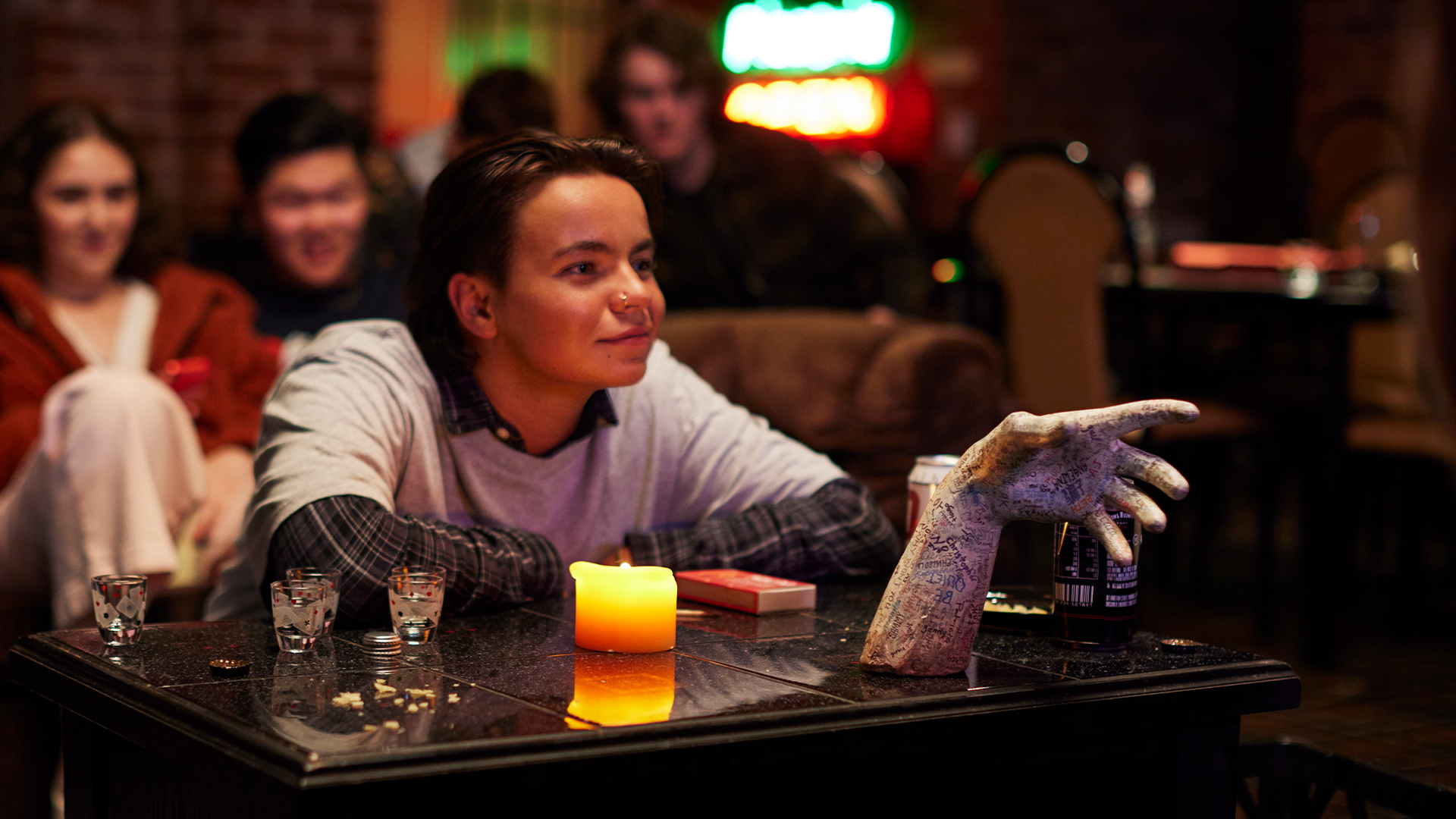
I appreciate this might be sort of outside the bounds of our chat. But speaking of punches, there’s some reporting a couple months ago about Street Fighter, and you guys potentially working on a new film. Is that something you’re able to talk about?
MICHAEL: All we can say is “Hadouken!”
DANNY: Right now, we’re signed on—we’re developing at the moment.
MICHAEL: We’re massive fans of the games. We spoke with Legendary Pictures and we’re excited to develop it with them. And we’ll see where it goes.
DANNY: There’s no script yet, no writer yet. No anything. It’s so early days, but we’re just going with the flow.
MICHAEL: We’re putting through ideas together now. We’re looking at things that inspired Street Fighter, what would be our spin on it, and giving justice to a game that we just love. From game to film is difficult to do—to try and do that right with this would be exciting.
I felt obligated to ask that question, so thank you for playing ball with me. Back to your actual film that we’re talking about today, we mentioned Nightmare on Elm Street briefly, what are some of the other horrors that might have fed in?
MICHAEL: Um, Street Fighter: The Animated Film?
I’m sure I saw some Street Fighter Van Damme in there somewhere as well…
DANNY: Yeah, there’s a little bit of that in there… A lot of cutscenes in the early games inspired…… No, there’s so many different things that inspired it. A big thing for me was The Exorcist still standing up today and working so well as both a drama film as well as a horror film—how seriously it takes the horror and how serious and realistic those characters are, that was a big thing. And Bong Joon-ho and Memories of Murder, in the way he’s able to dip between different genres, that was a big thing.
MICHAEL: Even Taika Waititi with JoJo Rabbit.
DANNY: Oh that jumps between those tones, yeah
MICHAEL: And same with Boy and same with Hunt for the Wilderpeople. Merging of genre—we love that stuff, so much. Bong Joon-ho does it well, he does it well. Everything that we write, we try to be able to merge genre like that—because life isn’t just one emotion. Life isn’t just scary, life isn’t just funny, you know, it’s a bit of everything.
You definitely lean towards some confrontational horror beats – there were definitely some strong reactions felt in the screening. How do you know how far to go? The opening sequence, for instance, that’s a real punch to the audience.
DANNY: And surprisingly, no blood really in that, either… The initial drafts of the script were way more violent. And like, even that first possession with Mia, went way further. It was about finding the balance, making it make sense, and letting those moments have meaning and not just be there for gratuitous sake. We did want there to be a meaning behind everything.
MICHAEL: There’s moments to be earned as well. It was a line to tread, because of course, you know, it’s a horror film when you want to have those shocking moments. But then also, like Danny said, you don’t want to be gratuitous for gratuitous’ sake
DANNY: Like, there was a scene that we shot where Mia sort of goes to hell, and that went for like, two minutes longer initially. It’s a really long sequence in the initial cut, and we’re like, “it’s too much, it feels too gross”. It felt like, like schlock horror. So it was just finding that balance in the edit, and the writing.
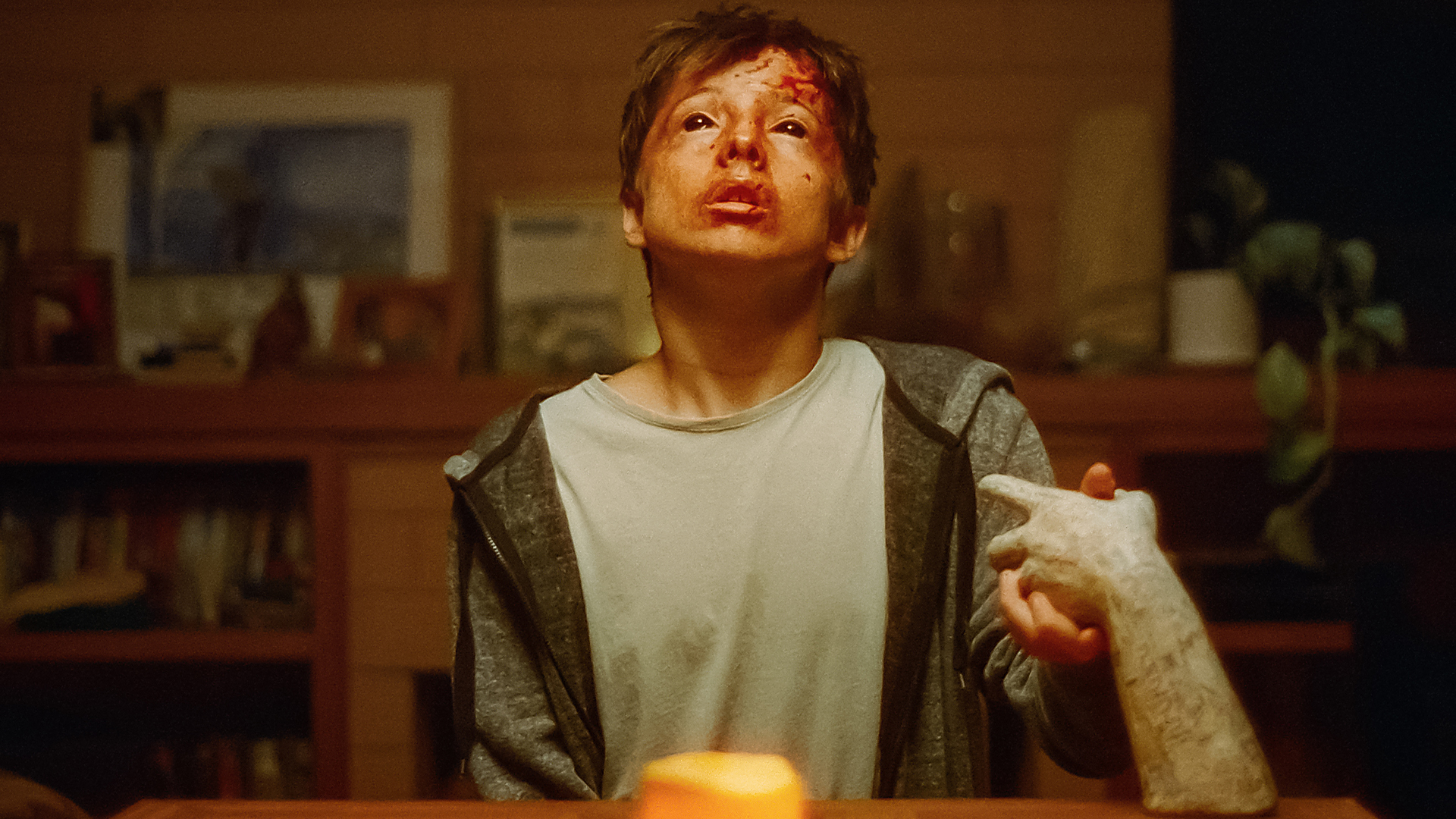
With that in mind, I wrote this question earlier and want to make sure I read it correctly: “How fucked up can you make a young kid’s face?”
DANNY: Well, pretty fucked up apparently! There was a car accident that I had when I was younger. And I cut my eye—look, there’s a scar here. I remember that bleeding so profusely and my face swelling up, just like it did in Talk to Me. So I remember that being an inspirational point. I kind of remember how my face reacted to that trauma.
MICHAEL: It could’ve been a lot worse if we wanted it to be…









